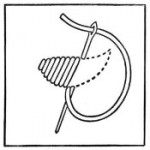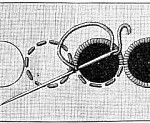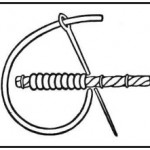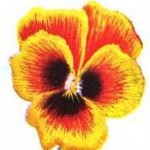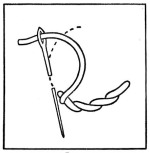 The stem stitch is perhaps the building block of all other embroidery stitches.
The stem stitch is perhaps the building block of all other embroidery stitches.
It is a stitch typically worked in a line and often used to outline an area.
We found several variations of the stem embroidery stitch along with a great example of how with a slight change the same basic stitch can create two very different looks.
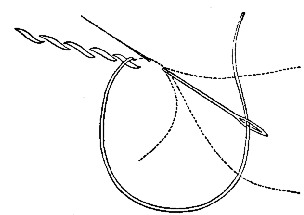 The stem stitch may be best described as a long stitch forward on the surface, and a shorter one backward on the under side of the fabric, the stitches following each other almost in line from left to right.
The stem stitch may be best described as a long stitch forward on the surface, and a shorter one backward on the under side of the fabric, the stitches following each other almost in line from left to right.
If the stitch is to be worked in a straight line, care must be taken to insert the needle along the same warp thread of the base fabric.
Changing or varying the length of each stem stitch will also create interesting variations in your embroidered pieces.
Another vintage embroidery book also included two variations of the stem stitch.
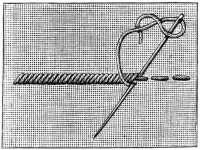 Identified by the author as the straight stem stitch, this stitch is worked from left to right over a base made of a running stitch.
Identified by the author as the straight stem stitch, this stitch is worked from left to right over a base made of a running stitch.
Insert the needle above the run thread, and brought out underneath it.
To make a more delicate stitch, go through only as much fabric as the running stitch covers.
 The sloping stem stitch is worked without a run thread; insert the needle from right to left in a slanting direction, under 1 or 2 horizontal threads of the fabric weave, and 5 or 6 perpendicular ones; so that each stitch reaches halfway back to the last.
The sloping stem stitch is worked without a run thread; insert the needle from right to left in a slanting direction, under 1 or 2 horizontal threads of the fabric weave, and 5 or 6 perpendicular ones; so that each stitch reaches halfway back to the last.
One way the stem stitch was frequently used in vintage embroidery was to outline larger motifs such as leaves. One author provided a short primer on the two different looks that can be achieved by using slight variations in the sewing of the stem stitch.
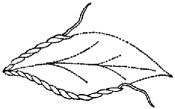
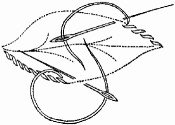 Study the two leaves to the right. Leaves rarely have a perfectly smooth edge. The first leaf, made with a smooth stem stitch makes a less attractive leaf than the second one made with a more staggered stitch.
Study the two leaves to the right. Leaves rarely have a perfectly smooth edge. The first leaf, made with a smooth stem stitch makes a less attractive leaf than the second one made with a more staggered stitch.
The lesson here is that when stitching embroideries, be mindful of the individual elements being worked. A slight stitch variation may make for a much more interesting and pretty finished piece of embroidery.
